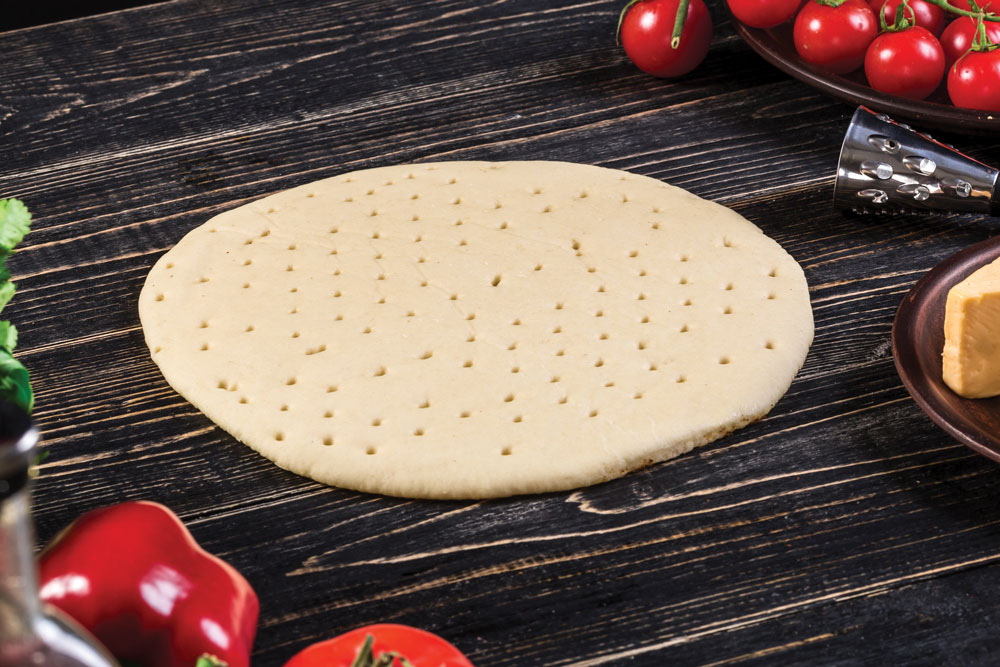How can I par-bake a pizza crust so that it doesn’t develop into a pocket-like pita?
There are several things you can do to keep your par-baked crusts from turning into pitas. Possibly the greatest factor is the bake itself. While pizza is baked from the bottom up, par-baked crusts are best cooked with a balanced top and bottom bake, at a significantly lower temperature than used for pizza. When making a par-baked crust in a deck oven, you can either bake it on a screen or right on the deck surface if you add roughly half of the sauce onto the dough prior to baking. When baking on a screen without the addition of any sauce, a good oven temperature will be between 400° and 450°F.
The crust will show signs of bubbling or the beginning of a pocket formation, but this can be addressed by correctly docking the dough skin immediately prior to baking. As soon as the crust is removed from the oven, it should be inverted onto a cooling rack or screen, which will help to flatten the top of the crust.
When baking either on a screen or right on the oven deck with the addition of some sauce, you can bake the crust at temperatures of 500° to 550°F. You will still need to heavily dock the skins prior to saucing, and some bubbles may form, but it shouldn’t cause any major issues. Sauced crusts cannot be inverted for cooling, so just place them on a cooling rack or a pizza screen to cool. When making crusts in this manner, I like to dispose of any remaining crusts at the end of the day. However, par-baked crusts made without sauce can be placed into a clean dough box and stored for up to three days.
As I’ve stated before, the big advantage of par-baked crusts is that you can make them during slow periods for use later in the day. Par-baked crusts can be stored at room temperature for the rest of the day. When things get busy and you’re in a rush, these crusts require less time to finish baking than a raw dough skin, so they save time and labor. However, consistency of product is important, so if you use the par-baked approach, you should make all of your pizzas that way!
In my next column, I’ll offer pointers for making par-baked crusts with an air impingement oven. That’s where things get tricky!
Tom Lehmann was the longtime director of bakery assistance for the American Institute of Baking and is now a pizza industry consultant.















